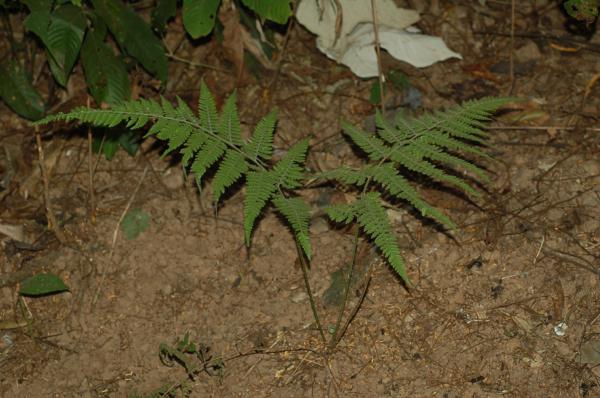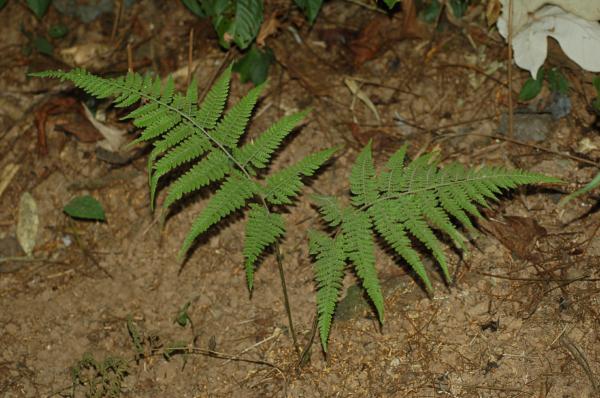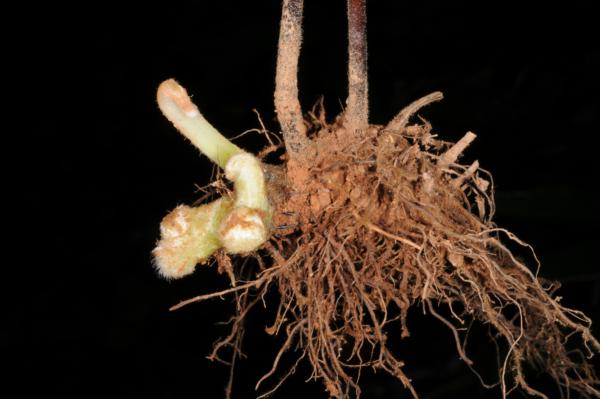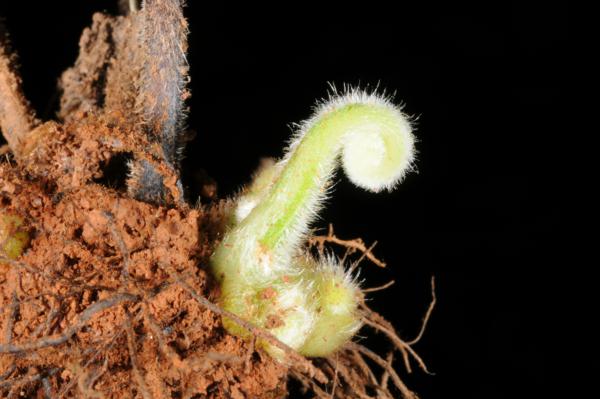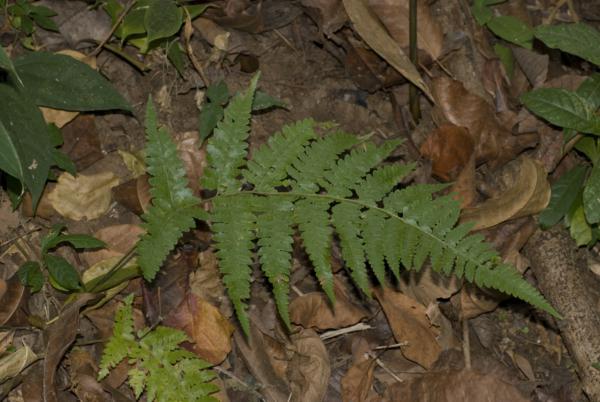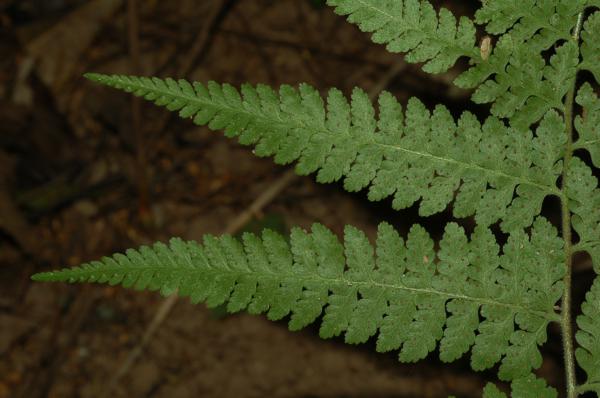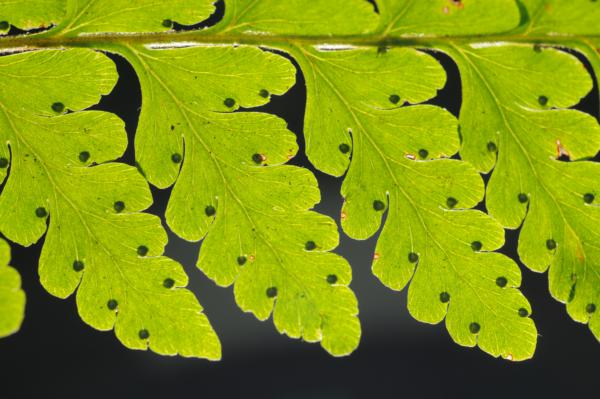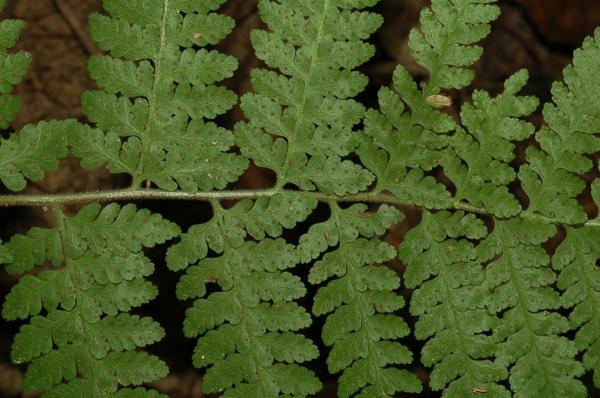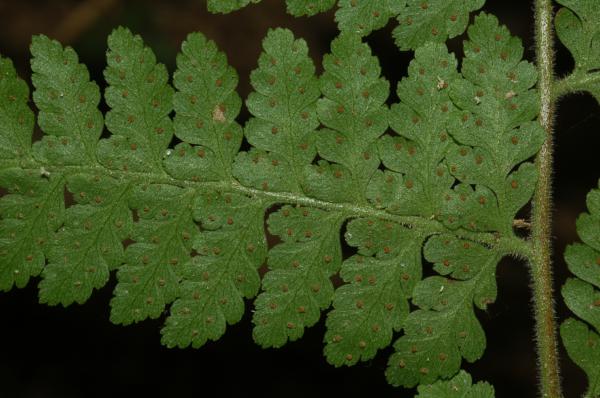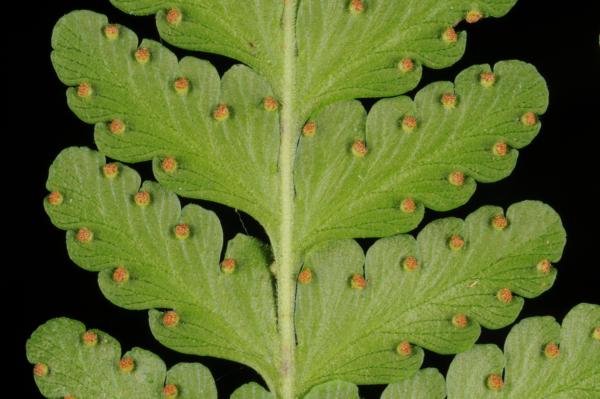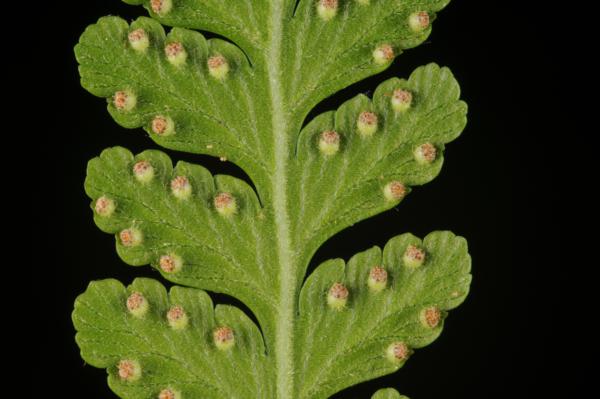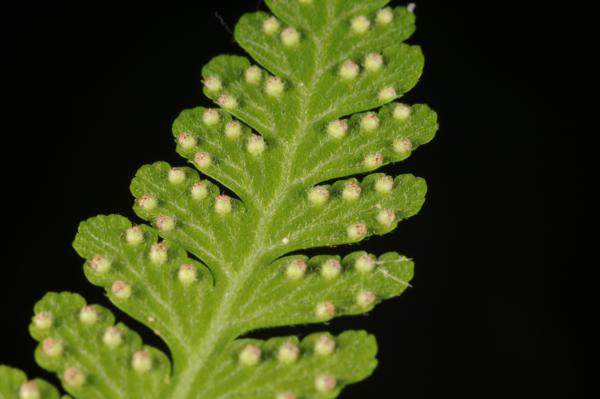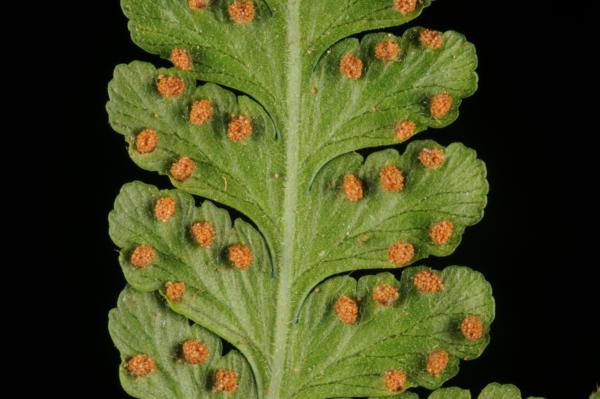
Microlepia speluncae (L.) T.Moore
Family
Dennstaedtiaceae
Nomenclature
Microlepia speluncae (L.) T.Moore, Index Fil.: 93. 1857; Bedd., Handb. Ferns Brit. India: 67. 1883; E.Smith, J. Siam Soc. Nat. Hist. Suppl. 8: 3. 1929; C.Chr., Contr. U.S. Natl. Herb. 26: 332. 1931; Tardieu & C.Chr., Fl. Indo-Chine 7(2): 99. 1939; Sledge, Kew Bull. 11: 524 1956; Ching, Fl. Reipubl. Popularis Sin. 2: 243. 1959; Holttum, Rev. Fl. Malaya ed. 1, 2: 314. 1955 [‘1954’]; Holttum, Dansk Bot. Ark. 20: 24. 1961; Tagawa & K.Iwats., Acta Phytotax. Geobot. 23: 54. 1968; Tagawa & K.Iwats., Fl. Thailand 3: 118, f. 7.7 & 7.8. 1979; Boonkerd & Pollawatn, Pterid. Thailand: 88. 2000; Newman et al., Checkl. Vasc. Pl. Lao PDR: 26. 2007. – Polypodium speluncae L., Sp. Pl. 1093. 1753.
Microlepia hancei Prantl, Arbeiten Königl. Bot. Gart. Breslau 1: 35. 1892; Ching, Fl. Reipubl. Popularis Sin. 2: 236. 1959. – Microlepia speluncae var. hancei (Prantl) C.Chr. & Tardieu, Not. Syst. 6: 9. 1937; Tardieu & C.Chr., Fl. Indo-Chine 7(2): 100. 1939; Holttum, Rev. Fl. Malaya ed. 1, 2: 315, f. 182. 1955 [‘1954’].
Microlepia pilosula C.Presl ex Prantl, Arbeiten Königl. Bot. Gart. Breslau 1: 36. 1892; Tardieu & C.Chr., Fl. Indo-Chine 7(2): 97. 1939; Ching, Fl. Reipubl. Popularis Sin. 2: 245. 1959.
Davallia polypodioides var. pubescens Hook., Sp. Fil. 1: 182. 1846. – Microlepia speluncae var. pubescens (Hook.) Sledge, Kew Bull. 11: 525. 1956; Tagawa & K.Iwats., SouthE. Asian Stud. 3(3): 81. 1965; Tagawa & K.Iwats., SouthE. Asian Stud. 5: 72. 1967.
Microlepia speluncae var. villosissima C.Chr., Gard. Bull. Straits Settlem. 4: 399. 1929; Holttum, Rev. Fl. Malaya ed. 1, 2: 315. 1955 [‘1954’]; Holttum, Dansk Bot. Ark. 20: 24. 1961.
Microlepia pyramidata Lacaita, J. Linn. Soc., Bot. 43: 486. 1916; Tardieu & C.Chr., Notul. Syst. (Paris) 6: 9. 1937. – Microlepia speluncae var. pyramidata (Lacaita) Tardieu & C.Chr., Fl. Indo-Chine 7(2): 100. 1939
Description
Rhizome long creeping, almost naked in the older part, deep brown, more than 7 mm diam. Stipes stramineous or brownish, pubescent or glabrescent, 50–70 cm long; lamina large, tripinnate to quadripinnatifid, up to 70 cm long, 50 cm wide; rachis stramineous to brownish, grooved on upper surface, more or less hairy; larger pinnae oblong-subtriangular, broadly cuneate at base, broadest at lower second or third pinna, gradually narrowing towards caudately acuminate apex, with more than 20 pinnules, about 60 cm long, 20 cm wide; costa grooved on upper surface, more or less hairy, upper pinnae gradually reducing in size; larger pinnules oblong-subtriangular or oblong-lanceolate, gradually narrowing towards apex, unequally cuneate at base, up to 15 cm long, 3 cm wide, distinctly stalked, apical secondary pinnules (segments) a little protruding; segments lobed to pinnatisect, oblong to subquadrangular, round to acute at apex, unequally cuneate at sessile base, typically 1.5–2 cm long, 6–8 mm wide; ultimate lobes round or spathulate, round to acute at apex, entire or undulate at margin of larger ones; softly papyraceous to papyraceous, deep green above, green below, variously hairy on axes or on laminar surfaces; veins pinnate, veinlets once or twice forked, indistinct on both surfaces, variously hairy. Sori a little within the margin of lobes, small; indusia cup-shaped, hairy .
Distribution in Thailand
NORTHERN: Mae Hong Son, Chiang Mai, Chiang Rai, Lampang, Tak; NORTH-EASTERN: Phetchabun, Loei; SOUTH-WESTERN: Kanchanaburi, Phetchaburi; CENTRAL: Nakhon Nayok; SOUTH-EASTERN: Chachoengsao, Chon Buri, Chanthaburi; PENINSULAR: Chumphon, Surat Thani, Phuket, Nakhon Si Thammarat, Trang, Satun, Narathiwat, Yala.
Distribution in Laos
Champasak.
Distribution in Cambodia
Kompong Speu, Mondulkiri.
Wider Distribution
Pantropical according to the current delimitation of the species .
Ecology
Usually on moderate, rather dry slopes in open areas or in light shade, most commonly at edge of thickets, up to 1200 m alt.
Proposed IUCN Conservation Assessment
Least Concern (LC). This species is widespread and not under any known threat.
Notes
The size of plants and form of pinnae and pinnules are very variable.
Voucher specimens - Thailand
Middleton et al. 4753, Kanchanaburi, Khao Laem National Park (E); Middleton et al. 4731, Chachoengsao, Ang Rue Nai Wildlife Sanctuary (E).
Voucher specimens - Cambodia
Long et al. CL352, Mondulkiri (P).
Habit
Habit
Rhizome
Crozier
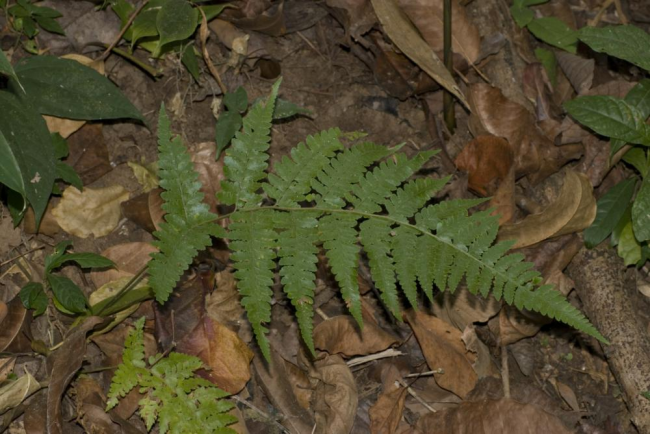
Frond
Pinnae
Venation
Rachis and pinnae bases
Lower surface of lamina
Lower surface of lamina
Sori
Sori
Mature sori
Site hosted by the Royal Botanic Garden Edinburgh. Content managed by Stuart Lindsay, Gardens by the Bay, Singapore and David Middleton, Singapore Botanic Gardens. Last updated 24 January 2012
